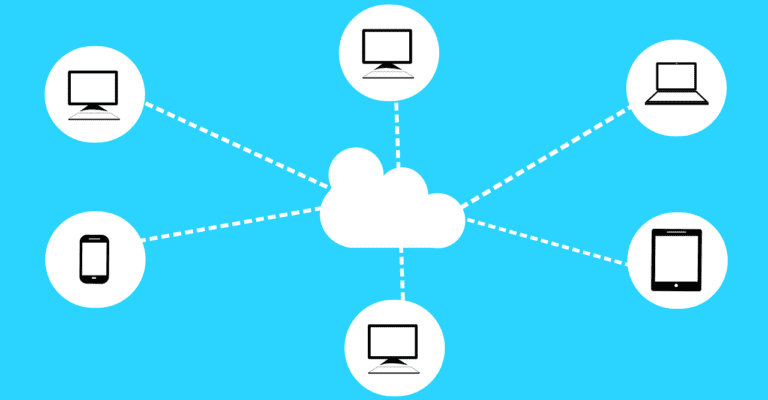How Does The Concept Of “defense In Depth” Relate To Business Continuity?
When it comes to business continuity, the concept of “defense in depth” plays a crucial role. The idea is not just about having a single layer of security, but rather implementing multiple layers to protect against various threats and potential disruptions. This approach ensures that even if one layer fails, there are additional measures in place to maintain the smooth operations of a business. By applying the principles of defense in depth, organizations enhance their ability to adapt, withstand, and recover from unforeseen events, making it an essential strategy for achieving long-term success. So, let’s delve into how this concept relates to business continuity and the benefits it brings.
Understanding the Concept of Defense in Depth
Definition of Defense in Depth
Defense in Depth is a comprehensive approach to security that involves implementing multiple layers of defense to protect against potential threats and attacks. It recognizes that no single security measure can provide complete protection, and therefore emphasizes the need for a combination of physical, technical, and procedural controls. By creating multiple layers of defense, organizations can minimize the likelihood and impact of security breaches and ensure the continuity of their operations.
Origins of Defense in Depth
The concept of Defense in Depth has its roots in military strategy. It was initially developed as a tactic to strengthen the defense of military fortifications. The idea was to create multiple layers of defense, such as moats, walls, and towers, to make it more challenging for the enemy to breach the defenses. This strategic approach has been adapted and applied to the field of cybersecurity to address the ever-evolving threats and challenges faced by businesses in today’s digital landscape.
Key Principles of Defense in Depth
There are several key principles that underpin the concept of Defense in Depth:
-
Layered Protection: Defense in Depth involves implementing multiple layers of security controls to create a strong defense system. This includes physical security measures, network and data security, application security, employee training, and other components.
-
Diversity of Controls: Each layer of defense should employ different controls and technology to ensure that if one layer is breached, other layers can still provide protection. This diversity reduces the likelihood of a single point of failure.
-
Redundancy: Defense in Depth promotes redundancy to ensure that if one security control fails, there are backup measures in place to maintain security. This could involve redundant systems, backups, or failover capabilities.
-
Defense at Every Layer: The concept asserts that security should be implemented at every layer of an organization’s infrastructure, from the network perimeter to individual devices and applications. Each layer should have its own set of security controls to mitigate risks effectively.
The Importance of Business Continuity
Definition of Business Continuity
Business Continuity refers to a set of strategies and plans that organizations put in place to ensure the continued operation of critical business functions and processes in the face of disruptive incidents. These incidents can range from natural disasters and technological failures to cyber-attacks and human errors. Business Continuity involves the establishment of procedures and the allocation of resources to support the recovery and restoration of business operations in a timely manner.
Why Business Continuity is Essential
Business Continuity is essential for organizations of all sizes and across all industries. Here’s why:
-
Minimizing Downtime: If a business experiences a significant disruption, such as a cyber-attack or a natural disaster, it can lead to extended periods of downtime, resulting in financial loss, reputational damage, and loss of customer trust. Business Continuity ensures that critical functions can continue even during adverse events, minimizing downtime and its associated costs.
-
Protecting Revenue and Customers: A disruption in business operations can result in a loss of revenue, customers, and market share. By having effective Business Continuity measures in place, organizations can mitigate these risks and protect their financial stability and customer relationships.
-
Compliance and Legal Requirements: Many industries have regulatory requirements that mandate organizations to have Business Continuity plans in place. Failing to comply with these requirements can lead to severe penalties and legal consequences.
-
Maintaining Organizational Reputation: The ability to effectively manage and recover from disruptions enhances an organization’s reputation. Customers, partners, and stakeholders trust companies that demonstrate a commitment to Business Continuity, knowing that their operations are resilient and reliable.
Integration of Defense in Depth within Business Continuity
Creating a Multi-Layered Approach
Integrating Defense in Depth within Business Continuity involves creating a multi-layered approach to security that encompasses various aspects of the organization’s operations. By incorporating both Defense in Depth and Business Continuity strategies, organizations can increase the robustness and resiliency of their security posture.
Components of Defense in Depth in Business Continuity
To effectively integrate Defense in Depth within Business Continuity, organizations should consider several key components:
-
Risk Assessment: Conducting a thorough risk assessment allows organizations to identify potential risks and vulnerabilities. This assessment should include the identification of both external and internal threats to the organization’s operations.
-
Preventive Measures: Once potential risks have been identified, organizations should implement preventive measures to minimize the likelihood of these risks materializing. This may involve implementing access controls, firewalls, intrusion detection systems, and other technical and procedural controls.
-
Incident Response Planning: Planning for incident response is critical to minimize the impact of disruptions and ensure a timely recovery. This includes the establishment of communication channels, the assignment of responsibilities, and the development of incident response procedures.
Risk Assessment and Mitigation
Identifying Potential Risks
In order to effectively implement Defense in Depth within Business Continuity, organizations must first identify potential risks and vulnerabilities. This involves conducting a comprehensive risk assessment that examines both external and internal threats. External threats may include natural disasters, cyber-attacks, and supply chain disruptions, while internal threats may include human errors, system failures, and insider threats.
Implementing Preventive Measures
Once potential risks have been identified, organizations should implement preventive measures to mitigate these risks. This may involve implementing access controls, such as strong passwords, multi-factor authentication, and user account management practices. Firewalls and intrusion detection systems can also be employed to monitor and filter network traffic, preventing unauthorized access and detecting potential attacks.
Planning for Incident Response
No matter how comprehensive the preventive measures may be, it is essential to have a well-defined incident response plan in place. This plan outlines the actions and procedures to be followed in the event of a disruption or security incident. It should include the identification of key personnel responsible for incident response, communication protocols, backup and recovery procedures, and coordination with external stakeholders, such as law enforcement and regulatory authorities.
Physical Security Measures
Securing the Physical Premises
Physical security measures play a crucial role in the Defense in Depth strategy within Business Continuity. Securing the physical premises involves implementing controls such as access control systems, surveillance cameras, burglar alarms, and perimeter fencing. These measures help prevent unauthorized access and deter potential intruders.
Controlling Access Points
Controlling access points is another important aspect of physical security. This involves the use of measures such as access cards, biometric authentication, and visitor management systems to ensure that only authorized individuals can enter restricted areas. Access points should be monitored and audited regularly to identify any potential vulnerabilities or breaches.
Surveillance Systems
Surveillance systems, including CCTV cameras and video analytics software, are vital tools for physical security. These systems provide real-time monitoring and recording of activities within the premises, acting as a deterrent for potential security threats. Surveillance footage can also be crucial in investigations and incident response efforts.
Network and Data Security
Firewalls and Intrusion Detection Systems
Network security measures are a critical component of Defense in Depth within Business Continuity. Firewalls and intrusion detection systems (IDS) play a vital role in protecting networks from external threats. Firewalls act as a barrier between internal networks and the internet, monitoring and controlling incoming and outgoing network traffic. IDS, on the other hand, detect and alert on potential intrusion attempts, helping organizations respond quickly to mitigate the risks.
Data Encryption and Backup
Data security is of utmost importance in today’s digital landscape. Encrypting sensitive data helps protect it from unauthorized access, ensuring its confidentiality. Regular data backups are essential to ensure data integrity and availability in the event of a security breach or system failure. Backups should be stored securely and tested regularly to ensure their effectiveness.
Implementing Secure Remote Access
In the modern business environment, remote access has become prevalent. Organizations must ensure that remote access to their networks and systems is secure to prevent unauthorized access. This can be achieved through the use of secure virtual private networks (VPNs), multi-factor authentication, and secure remote desktop protocols. Regular monitoring and review of remote access logs can also help identify any suspicious activities.
Application Security
Secure Application Development
Secure application development is crucial to ensure the integrity and security of software systems. Following secure coding practices and conducting thorough application testing can help identify and address potential vulnerabilities. Properly configuring application security controls, such as user authentication and access controls, also adds an additional layer of defense.
Continuous Monitoring and Patching
Applications should be continuously monitored for potential vulnerabilities and weaknesses. This can be done through regular automated scans and manual security testing. Prompt patching of identified vulnerabilities is critical to prevent exploitation by attackers.
Contingency Plans for Application Failures
Even with robust application security measures in place, failures can still occur. It is essential to have contingency plans in place to address such failures. This may involve having redundant systems, utilizing failover capabilities, and developing backup and recovery procedures to minimize the impact on business operations.
Employee Training and Awareness
Importance of Employee Training
Employees are often the weakest link in an organization’s security posture. Without proper training and awareness, they may unknowingly expose the organization to security risks, such as falling victim to phishing attacks or mishandling sensitive information. Employee training is crucial to educate them on best practices, security policies, and procedures to ensure they understand their roles and responsibilities in maintaining a secure and resilient environment.
Promoting Cybersecurity Awareness
Promoting cybersecurity awareness among employees further strengthens the Defense in Depth approach within Business Continuity. Regularly sharing updates on the latest threats, conducting phishing simulations, and providing tips on safe online practices can help employees develop a security-conscious mindset and minimize the likelihood of security incidents.
Conducting Regular Security Audits
Regular security audits can help identify any potential weaknesses or vulnerabilities within the organization. These audits may involve assessing the effectiveness of security controls, conducting vulnerability scans, and reviewing access controls and user permissions. The findings from these audits can then be used to enhance security measures and ensure ongoing compliance with security policies and standards.
Supplier and Third-Party Management
Evaluating Security of Suppliers and Partners
Organizations often rely on suppliers and third-party vendors for various products and services. It is crucial to evaluate the security posture of these suppliers and partners to ensure they adhere to appropriate security standards. This evaluation can involve conducting security audits, reviewing their security policies, and assessing their incident response capabilities.
Establishing Clear Security Requirements
When engaging with suppliers and third parties, it is essential to establish clear security requirements. This includes contractual agreements that outline security expectations and responsibilities. These requirements should address data protection, access controls, incident reporting, and compliance with relevant regulations.
Conducting Regular Audits
Regular audits of suppliers and third parties are necessary to ensure ongoing compliance with security requirements and to identify any potential security risks. These audits can help detect any changes in the security posture of suppliers and partners, enabling organizations to take appropriate actions if any issues are identified.
Continuous Improvement and Evaluations
Monitoring and Assessing Security Posture
Maintaining a strong security posture requires continuous monitoring and assessment. Organizations should implement security monitoring tools and conduct regular assessments, such as vulnerability scans and penetration tests, to identify any new vulnerabilities or weaknesses. By promptly addressing these issues, organizations can continuously improve their security defenses and adapt to emerging threats.
Conducting Regular Business Continuity Drills
To ensure the effectiveness of Business Continuity plans, regular drills and testing should be conducted. These drills simulate various disruptive scenarios, such as cyber-attacks or natural disasters, to test the organization’s response and recovery capabilities. The findings from these drills can be used to refine Business Continuity plans, address any gaps, and ensure that the organization is well-prepared to handle disruptions.
Updating and Enhancing Defense in Depth Strategies
The threat landscape is constantly evolving, which necessitates periodic reviews and updates of Defense in Depth strategies. Organizations should stay abreast of emerging threats, technological advancements, and evolving regulations to continuously enhance their security measures. Regular evaluation and improvement of Defense in Depth strategies ensures that the organization’s security posture remains effective and resilient over time.
In conclusion, integrating Defense in Depth within Business Continuity is crucial for organizations to ensure the continuity of their operations and the protection of their assets. By implementing multi-layered security measures, conducting comprehensive risk assessments, and continuously improving security controls, organizations can enhance their resilience and minimize the impact of potential threats and disruptions. Ultimately, the integration of Defense in Depth within Business Continuity enables organizations to maintain operational continuity, protect their reputation, and maintain customer trust in an increasingly interconnected and digital world.








